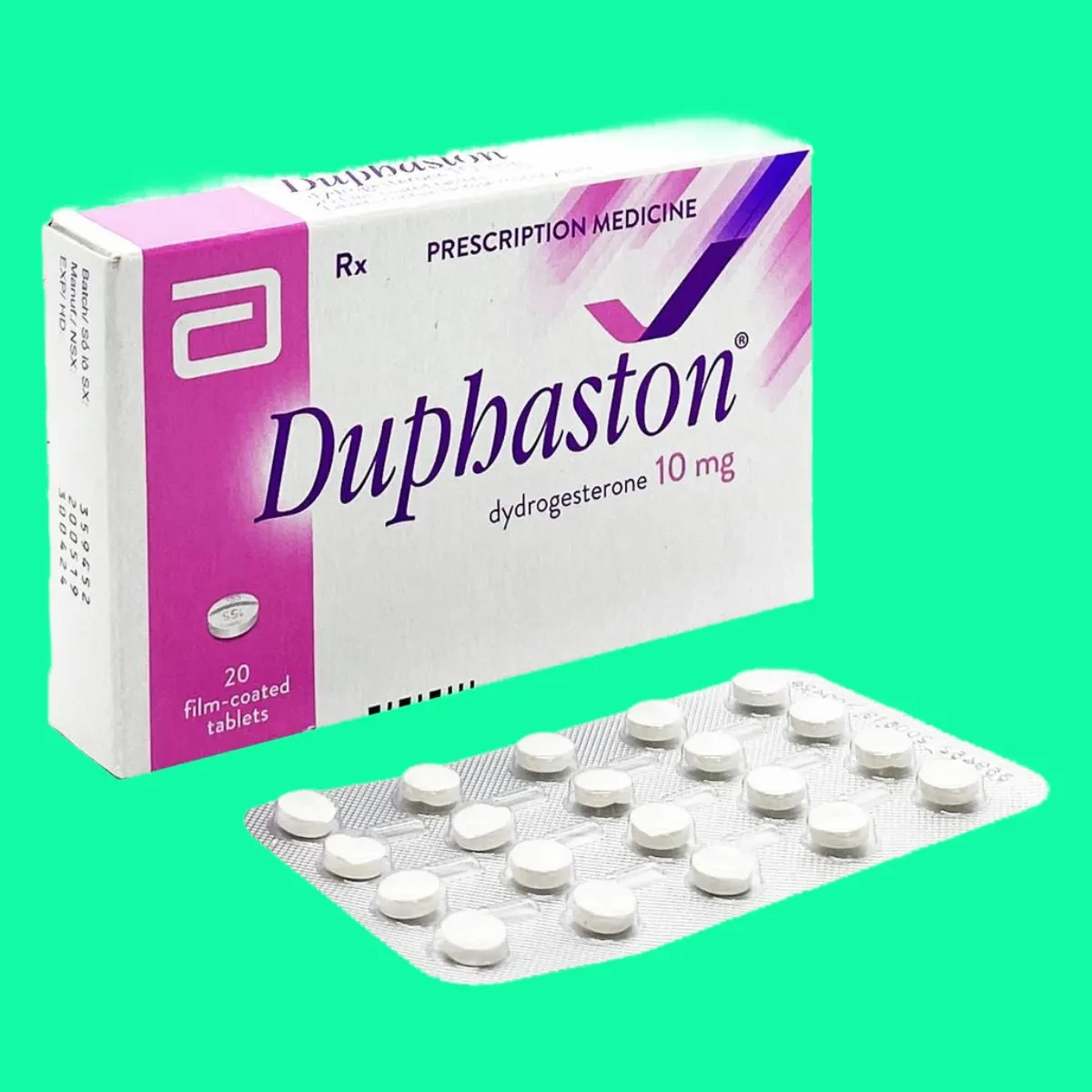Duphaston Uses, Dosage, Side Effects and more
Duphaston is a progestogen structurally related to progesterone. However, unlike progesterone, it does not induce an increase in temp nor inhibit ovulation and may be preferred over other progestational agents when contraceptive effect is not required. It does not have oestrogenic or androgenic properties.
Duphaston is an orally active progestogen which acts directly on the uterus, producing a complete secretory endometrium in an estrogen-primed uterus. At therapeutic levels, dydrogesterone has no contraceptive effect as it does not inhibit or interfere with ovulation or the corpus luteum. Furthermore, dydrogesterone is non-androgenic, non-estrogenic, non-corticoid, non-anabolic and is not excreted as pregnanediol. Duphaston helps to regulate the healthy growth and normal shedding of the uterus lining. Therefore, it may be useful in the treatment of menstrual disorders such as absent, irregular or painful menstrual periods, infertility, premenstrual syndrome and endometriosis.

| Attribute | Details |
|---|---|
| Trade Name | Duphaston |
| Generic | Dydrogesterone |
| Dydrogesterone Other Names | Didrogesterona, Didrogesterone, Dydrogesterona, Dydrogestérone, Dydrogesterone, Dydrogesteronum, Gestatron, Hydrogesterone, Hydrogestrone, Isopregnenone |
| Weight | 10mg, |
| Type | Tablet |
| Formula | C21H28O2 |
| Weight | Average: 312.4458 Monoisotopic: 312.20893014 |
| Groups | Approved, Investigational, Withdrawn |
| Therapeutic Class | Female Sex hormones |
| Manufacturer | Abbott India Ltd, Unimed Unihealth Mfg, Ltd, Solvay Pharmaceuticals (abbott), Abbott Biologicals Bv, Aja Pharmaceutical Industries, Abbott Biologicals B, V, , Abbott Indonesia |
| Available Country | India, Bangladesh, Philippines, Saudi Arabia, Indonesia, Netherlands, Portugal, Switzerland, |
| Last Updated: | January 7, 2025 at 1:49 am |
Uses
Treatment of progesterone deficiencies such as:
- Treatment of dysmenorrhoea
- Treatment of endometriosis
- Treatment of secondary amenorrhoea
- Treatment of irregular cycles
- Treatment of dysfunctional uterine bleeding
- Treatment of pre-menstrual syndrom
- Treatment of threatened and habitual abortion, associated with proven progesterone deficiency
- Treatment of infertility due to luteal insufficiency
Duphaston is also used to associated treatment for these conditions: Abortions spontaneous, Infertility, Menstrual Distress (Dysmenorrhea), Premenstrual Syndrome, Recurrent Miscarriages, Assisted Reproductive Techniques (ART), Menstrual Regulation
How Duphaston works
Duphaston is a progestogen that works by regulating the healthy growth and normal shedding of the womb lining by acting on progesterone receptors in the uterus.
Dosage
Recurrent miscarriage: 10 mg bid given cyclically until conception, then continuously until wk 20 of pregnancy, after which dose may be gradually reduced.
Infertility: 10 mg bid.
Menstrual disorders: 10 mg bid in a cyclical regimen.
Endometriosis: 10 mg bid-tid cyclically or continuously.
Threatened miscarriage: Initially, 40 mg followed by 10 mg or more every 8 hr, continued for a wk after symptoms are relieved. Reduce dose gradually after that unless symptoms return.
Endometrial protection during menopausal hormonal replacement therapy: 10 mg 1-2 times daily in a cyclical regimen or 5 mg daily.
How Long Does It Take to Work?
How Long Does It Take to Work? see here Duphaston
Side Effects
Dizziness, nausea, headache, fatigue, emotional lability, irritability; abdominal pain and distention; muskuloskeletal pain.
Toxicity
No serious or unexpected toxicity has been observed with dydrogesterone. In acute toxicity studies, the LD50 doses in rats exceeded 4,640mg/kg for the oral route.
Precaution
Monitor closely for loss of vision, proptosis, diplopia, migraine, signs and symptoms of embolic disorders. CVD or renal impairment, epilepsy, asthma, other conditions which may be aggravated by fluid retention. Lactation.
Interaction
Carbamazepine, griseofulvin, phenobarbital, rifampicin enhances the clearance of progestogens.
Elimination Route
Rapidly absorbed in the gastrointestinal tract with a bioavailability of 28%.
Half Life
Duphaston: 5-7 hours, 20-dihydrodydrogesterone (DHD) metabolite: 14-17 hours
Pregnancy & Breastfeeding use
From spontaneous surveillance systems to date, there is no evidence that dydrogesterone can not be used during pregnancy.
Duphaston is excreted in the milk of nursing mothers. A risk to the suckling child cannot be excluded. Duphaston should not be used during breast-feeding.
There is no evidence that dydrogesterone decreases fertility at therapeutic dose.
Contraindication
Hypersensitivity to the active substance or to any of the excipients. Known or suspected progestogen dependent neoplasms. Undiagnosed vaginal bleeding
Acute Overdose
Limited data are available with regard to overdose in humans. Duphaston was well tolerated after oral dosing (maximum daily dose taken to date in humans 360 mg). No reports of ill-effects from overdose have been recorded. If a large overdose is discovered within two or three hours and treatment seems desirable, gastric lavage is recommended. There are no specific antidotes and treatment should be symptomatic. Aforementioned information is also applicable for overdosing in children.
Storage Condition
Do not store above 30˚C. Keep in a dry place. Keep the blister in the outer carton, in order to protect from moisture.
Innovators Monograph
Duphaston contains Dydrogesterone see full prescribing information from innovator Monograph, MSDS, FDA label



